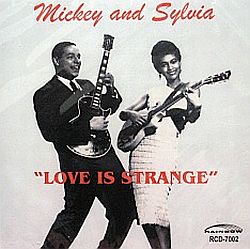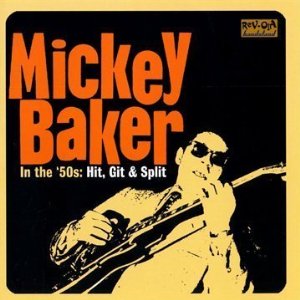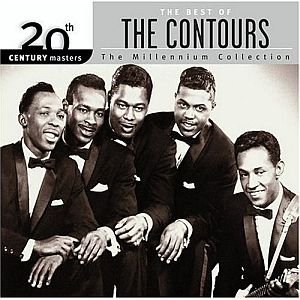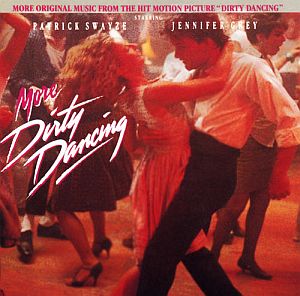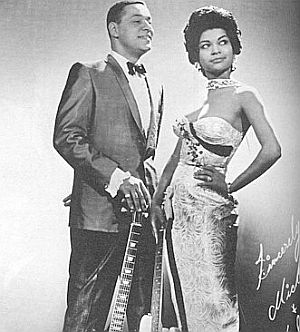
Mickey Baker and Sylvia Vanderpool Robinson of “Mickey & Sylvia” fame, had 1957 hit,“Love is Strange.”
“Mickey” was Mickey Baker, a well-known “session guitarist” in music circles of that day – playing background music for other artists. Baker, in fact, was considered the “go to” session guitar player of the 1950s and early 1960s. He performed on dozens of rock ‘n roll hits and on many recordings. “Sylvia” was Sylvia Vanderpool, formerly billed in her earlier singing career as “Little Sylvia” Vanderpool, who later in the 1980s became an important promoter in advancing Sugar Hill Records, a major player in the emergence of rap music.
Mickey & Sylvia first formed their duo in the mid-1950s. Baker, who then gave guitar lessons to make ends meet, teamed up with Sylvia Vanderpool, one of his students. Sylvia later became Sylvia Robinson after she married Joe Robinson, and they would continue together in later years in the music business.Music Player
“Love is Strange” – 1957 – Mickey & Sylvia
But Mickey and Sylvia first tried their hand as a duo at a Brooklyn-based record label named Rainbow where they cut a few recordings without much success. They later signed with RCA’s Groove records. Their first recording there, titled “No Good Lover,” which according to one report, was “a wild, upbeat, two guitar and washboard rocker.” However, their second recording at Groove was “Love Is Strange,” the one that became a smash hit and brought them into national prominence.
“Love is Strange” has a distinctive guitar riff to it, and was adapted by Mickey and Sylvia from “Billy’s Blues,” a Bo Diddley and Billy Stewart song. “Love is Strange,” however, had its own unique sound and guitar licks, and would go on to influence a number of other artists and recordings in the years ahead. The Mickey & Sylvia single was released in late November 1956. It hit No. 1 on the rhythm and blues (R&B) singles chart in January 1957 and held that spot for two weeks. On the other charts of that day, “Love is Strange” rose into the Top 20 and generally remained in the Top 40 for more than three months. Mickey and Sylvia also made some TV appearances with this song, including on Dick Clark’s American Bandstand prime-time evening show in November 1957.
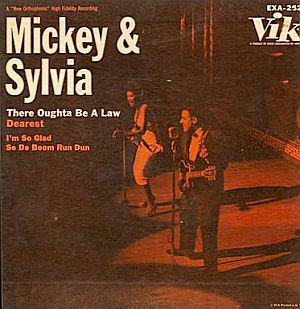
Cover of “Mickey & Sylvia” EP that included their 1957 charting hit, “There Oughta’ Be A Law”. Click for 24-song CD.
Mickey Baker – who some regard as one of the best guitarists of his day – recorded as a solo artist for a time and went to France where he found some success playing as a session guitarist. He would also write some best-selling guitar instruction books, among them, Jazz Guitar. Sylvia married Joe Robinson in 1964, and would co-write some songs in the 1970s. She had a No. 3 hit with “Pillow Talk” in 1973, and would continue to hit the R& B charts with a few recordings though the late 1970s, when she also became involved in the music business. About this time she co-founded an early rap music label named Sugar Hill and helped launch the Sugar Hill Gang rap group with its top hit of 1979, “Rappers’ Delight” (#4 R&B, #26 pop). She would also help produce other rap groups. But then in the 1980s came the film Dirty Dancing, bringing Mickey & Sylvia’s famous 1950s tune back on the scene.
Dirty Dancing
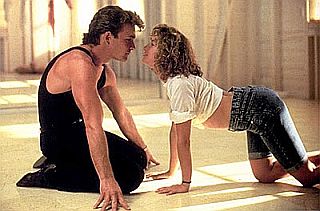
Patrick Swayze & Jennifer Grey in “lover boy” practice dance scene from 1987 film “Dirty Dancing” using the 1957 Mickey & Sylvia song, “Love is Strange.”
Baby has her eyes opened early on when she happens into an “employees only” dirty dancing venue where she first sees, and soon falls for, male dance instructor hunk, “Johnny,” played by Patrick Swayze. Opportunity soon presents itself for Baby when Swayze’s normal partner (not his girfriend) can’t perform in a major dance routine ( she’s pregnant, but not by Swayze). The plot thickens when Baby tries to help by borrowing money for an illegal abortion for the partner from her doctor father, to whom she lies. But it all works out in the end, with even Dad helping to save the day… Swayze and friends, meanwhile, turn to non-dancer Baby to fill the role of his pregnant partner, making Baby into a substitute dancing star. In the process of Baby’s “up-close-and-personal” make-over and dance instruction, she and Johnny become an item.
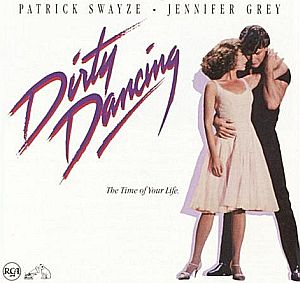
Original 1987 "Dirty Dancing" soundtrack; includes Mickey & Sylvia's "Love is Strange." Click for CD.
Dirty Dancing became a massive box office hit at the time, and has since surpassed some $215 million in gross box office revenue worldwide as of 2010. It also collected a variety of film and music accolades. The film’s soundtrack was credited with starting an oldies music revival in the late 1980s. The original Dirty Dancing soundtrack album of August 1987 had 12 songs, including “Love is Strange.” Demand for the album caught RCA Records by surprise. It became a colossal commercial success in the U.S., as it landed at No. 1 on the Billboard albums chart, spending 18 weeks there. It went on to sell more than 42 million copies worldwide (later, a subsequent album, More Dirty Dancing, issued in February 1988, also sold millions of copies ).
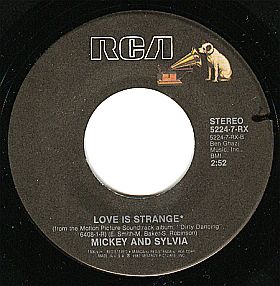
“Love is Strange” appeared on “B” side of 1987 single, “I’ve Had The Time of My Life,” by Bill Medley & Jennifer Warnes. Click for digital 'Time of My Life'.
In the U.S., “The Time of My Life” topped the Billboard Hot 100 chart in November 1987 for one week and also reached No. 1 on the Adult Contemporary chart for four weeks. In the U.K., the song hit the Top Ten twice: once in November 1987 after the film’s initial release, peaking at No. 6, and then again in January 1991 after the film was shown on television, reaching No. 8. There were also maxi-single editions of “The Time of My Life” that included Mickey & Sylvia’s “Love is Strange.”
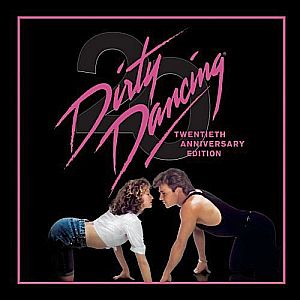
Cover art from the 20th anniversary edition of the “Dirty Dancing” soundtrack album, 2007. Click for CD.
In addition to the singles and albums, there was also a “Dirty Dancing Tour” that ran for ten-months which was seen by some two million fans in eight countries. This tour included, at some locations, 1960s stars such as Ronnie Spector of The Ronettes, Bill Medley of the Righteous Brothers, members of the Contours group, and others. It’s not clear whether Mickey Baker or Sylvia Robinson did any performing or made any appearances as part of this tour. There were also subsequent editions of the Dirty Dancing soundtrack album issued. In October 2007, RCA re-released a 20th anniversary edition of the soundtrack with remastered versions of the original songs, plus a DVD with promotional material. The remastered disc includes Mickey & Sylvia’s “Love is Strange.”
Over the years, “Love is Strange” has also had a long list of famous duos covering the song. Chubby Checker and Dee Dee Sharp covered it in 1960; Sonny and Cher in 1964; Peaches & Herb had a 1967 Top 20 hit with their cover; Paul McCartney and his former wife Linda covered it in1971; Buck Owens and Susan Raye had a Top 20 country hit with the song in 1975; and Kenny Rogers and Dolly Parton did a cover version that hit No. 21 on the country singles chart in 1990. In addition to these, Buddy Holly did a cover that surfaced in 1969; the British group Everything but the Girl had a Top 20 hit with the song in 1992; and in 1998, a synthetic-pop band from Germany named Wolfsheim also did a cover version. But for many, the original Mickey & Sylvia version is still the gold standard. In 2004 “Love Is Strange” was inducted into the Grammy Hall of Fame for its influence as a rock `n roll single.Additional stories on music at this website can be found at the “Annals of Music” category page, or go to the Home Page for other story choices. Thanks for visiting — and if you like what you find here, please make a donation to help support the research and writing at this website. Thank you. – Jack Doyle
|
Please Support Thank You |
____________________________________
Date Posted: 19 May 2011
Last Update: 29 July 2019
Comments to: jdoyle@pophistorydig.com
Article Citation:
Jack Doyle, “Love is Strange, 1956-2007,”
PopHistoryDig.com, May 19, 2011.
____________________________________
Sources, Links & Additional Information
“Mickey and Sylvia,” in Holly George-Warren and Patricia Romanowski (eds), The Rolling Stone Encyclopedia of Rock & Roll, Rolling Stone Press, New York, 3rd Edition, 2001, pp. 646-647.
Joel Whitburn, “Mickey and Sylvia,” The Billboard Book of Top 40 Hits, 8th Edition, Billboard Books: New York, p. 424.
“Love Is Strange,” Wikipedia.org.
“Mickey ‘Guitar’ Baker,” TheHoundBlog, January 9, 2008.
Richie Unterberger, “Biography, Mickey & Sylvia,” AllMusic.com.
“Mickey & Sylvia,” Biography, iTunes
“Sylvia Robinson,” Wikipedia.org.
Ed Hogan,” ‘Little’ Sylvia Robinson Biography,” The Roots of R&B.
“Mickey & Sylvia Record Label Shots,” ColorRadio.com.
Samuel G. Freedman, “‘Dirty Dancing’ Rocks to an Innocent Beat,” New York Times, August 16, 1987, p. A-19.
“(I’ve Had) The Time of My Life,” Wikipedia,org.
Vincent Canby, “Film: ‘Dirty Dancing,’ A Catskills Romance in 1963,” New York Times, August 21, 1987.
“Sylvia Robinson,” Lounging at the Waldorf .blogspot.com, October 10, 2011.
Bruce Weber, “Mickey Baker, Guitarist, Is Dead at 87,” New York Times, November 29, 2012.
_________________________

